Make the most of natures larder by using wild garlic and three cornered leek to make these pesto pinwheels! Get the recipe below.
Foraged food
Once you open up to the world of foraging you'll never look back. There's an abundance of wild plants in the UK that can be enjoyed all year round. Each year I try to learn one or two more plants to identify in my local parks and woodland. The one that I've recently discovered is Three Cornered Leek and I'm so pleased to add this to my repertoire!
What is three cornered leek?
Three cornered leeks are a stunning plant with beautiful white flowers which can be enjoyed in a wide range of different recipes. You may occasionally hear it called three cornered garlic, onion weed, angled onion or even snowbells.
Although they are delicious (and beautiful to look at) they are actually an invasive species. Because of this, in the UK it's an offence to plant them or encourage them to grow.
What does it taste like?
The name is a bit of a giveaway. These pretty plants have a garlic / onion smell and taste a bit like baby leeks, spring onions or chives.
All of the plant is edible. You can pull up the full plant and treat it like a baby leek or spring onion. The leaves and flowers are perfect for adding to salads, stir fries, soups or stews. If the plant is more mature, use the roots like you would onion or garlic.
The flavour does become more mild when it is cooked, so for maximum flavour eat the leaves raw, or add them near the end of cooking.
Much like wild garlic, you can also pickle the seed pods.
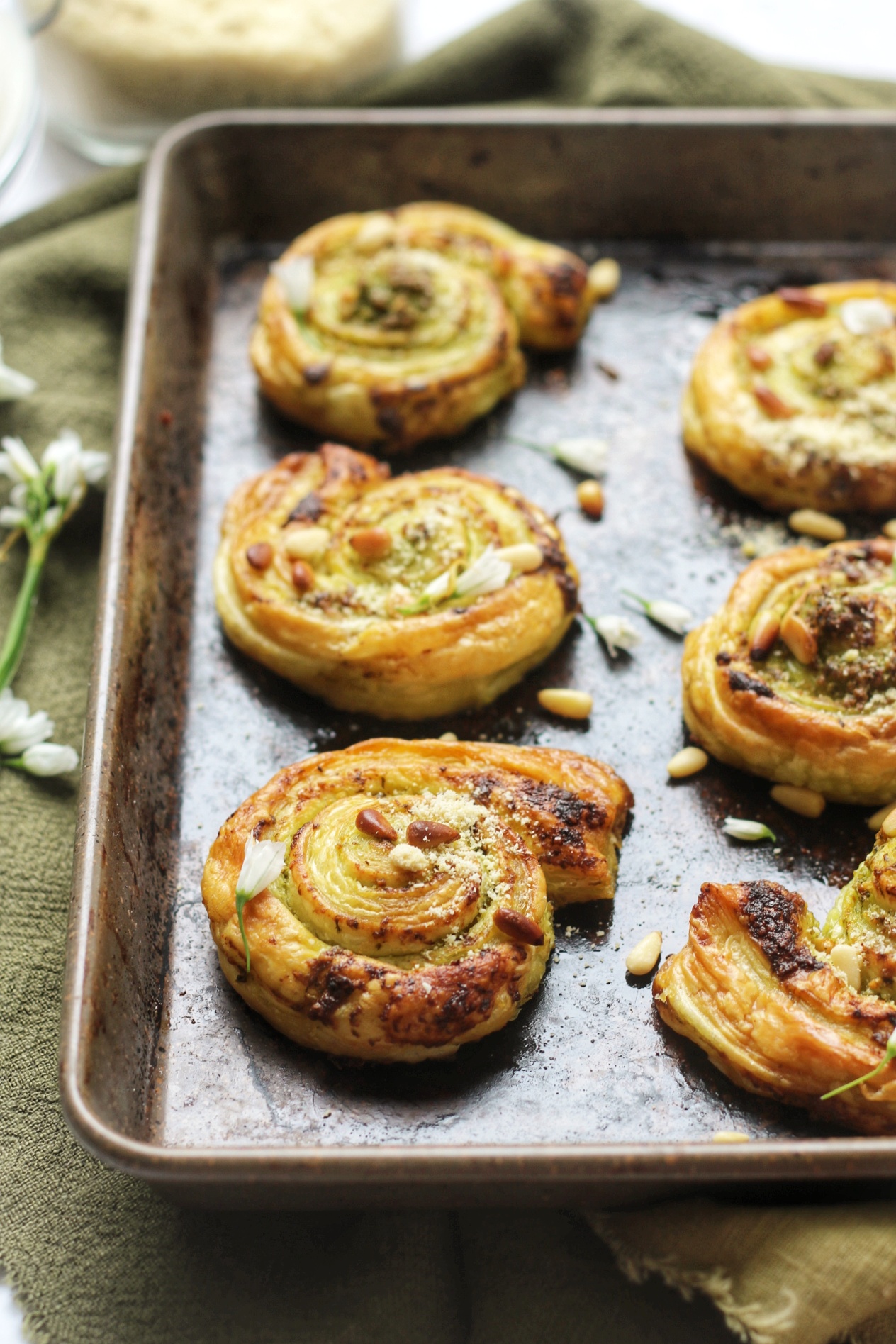
How can I spot it?
If you want to go foraging, make sure you do so with care. Always go foraging with good identification books and if you're unsure, leave it be! (Check out my foraging book recommendations at the end of this post.)
Three cornered leek plants are beautiful. You'll first notice their long, thin leaves and their delicate white flowers.
The leaves are quite distinctive, they are long, thin and green but if you look closer they have shallow ‘V’ shape. The flower stem is like the leaves but more triangular in profile than the leaves and is where the name "three cornered" comes from.
The flowers are very similar to white bluebells as they hang down in clusters, each flower having six petals and a green stripe. They are one of the easiest ways of identifying the plant but the flowers only last from April to June.
When is three cornered leek in season?
You'll find this tasty plant growing between February and October. Because it has such a long season you can enjoy it for much longer than wild garlic which seems to disappear as fast as it takes over the forest floor.
Where can I find it?
Three cornered leek grows in hedgerows, on verges, along the edges of woodlands and field edges and it may already be popping up in your garden in your flower beds!
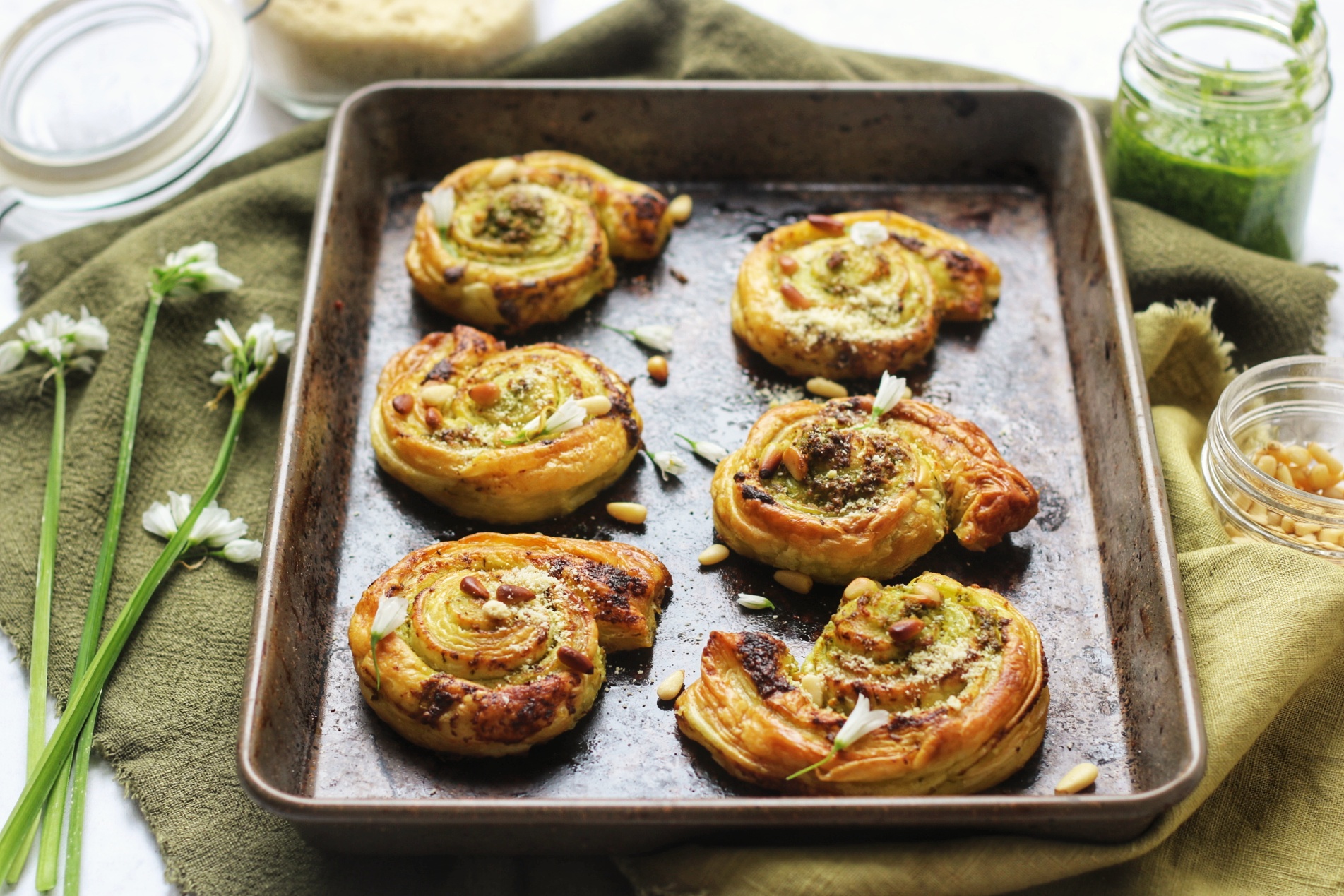
Pesto pin wheels
Once I'd picked my three cornered leek, along with a good helping of wild garlic, I did what I always do and turned a good portion of it into pesto. (Check out my original wild garlic pesto recipe here). Pesto is a great way for preserving any herb and is just so versatile.
I didn't just want to stir my foraged pesto through pasta. No. Instead, I decided to spread it over a puff pastry sheet, roll it up into a spiral log, cut it into 12 pieces and bake in the oven for 20-25 minutes. The result? These delicious wild garlic and three cornered leek pesto pin wheels!
The puff pastry is so light and flaky. The pesto is quite mild and subtle which makes the pin wheels really moreish. A sprinkling of vegan parmesan, pine nuts and the three cornered leek flowers finishes them off perfectly.
The recipe
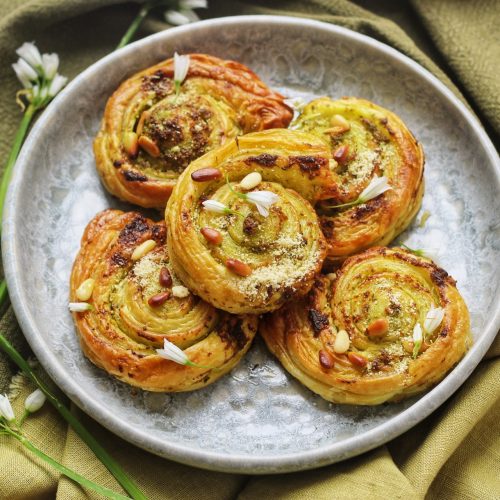
Three Cornered Leek Pesto Pinwheels
Ingredients
For the pesto
- 25 g three cornered leek leaves and stems only
- 25 g wild garlic leaves only
- 0.5 lemon zest and juice
- 25 g pine nuts
- 50-75 ml olive oil
- 1 pinch salt
For the pinwheels
- 320 g puff pastry ready rolled
- 2 tablespoon vegan parmesan
- 1 tablespoon pine nuts
- 2 tablespoon three cornered leek flowers
Instructions
- Place all of the pesto ingredients into a high powered blender and blitz on high until you have a smooth pesto.
- Roll out the puff pastry sheet and spread over the pesto leaving a gap around the edges.
- Carefully roll the pastry back up (this may get messy as the pesto tries to escape), then cut the rolled up pastry log into 12 slices.
- Line a baking sheet with grease proof paper and lay the pastry spirals on to the baking tray with the spiral facing up. Make sure you leave 2-3 inches between each spiral as they will spread out when baking.
- If you have some extra pesto spoon this over the pinwheels.
- Bake in the centre of the oven for 20-25 minutes or until the pastry is golden brown and crisp.
- Serve while still warm with a sprinkling of vegan parmesan, more pine nuts and the flowers from the three cornered leek.
Nutrition
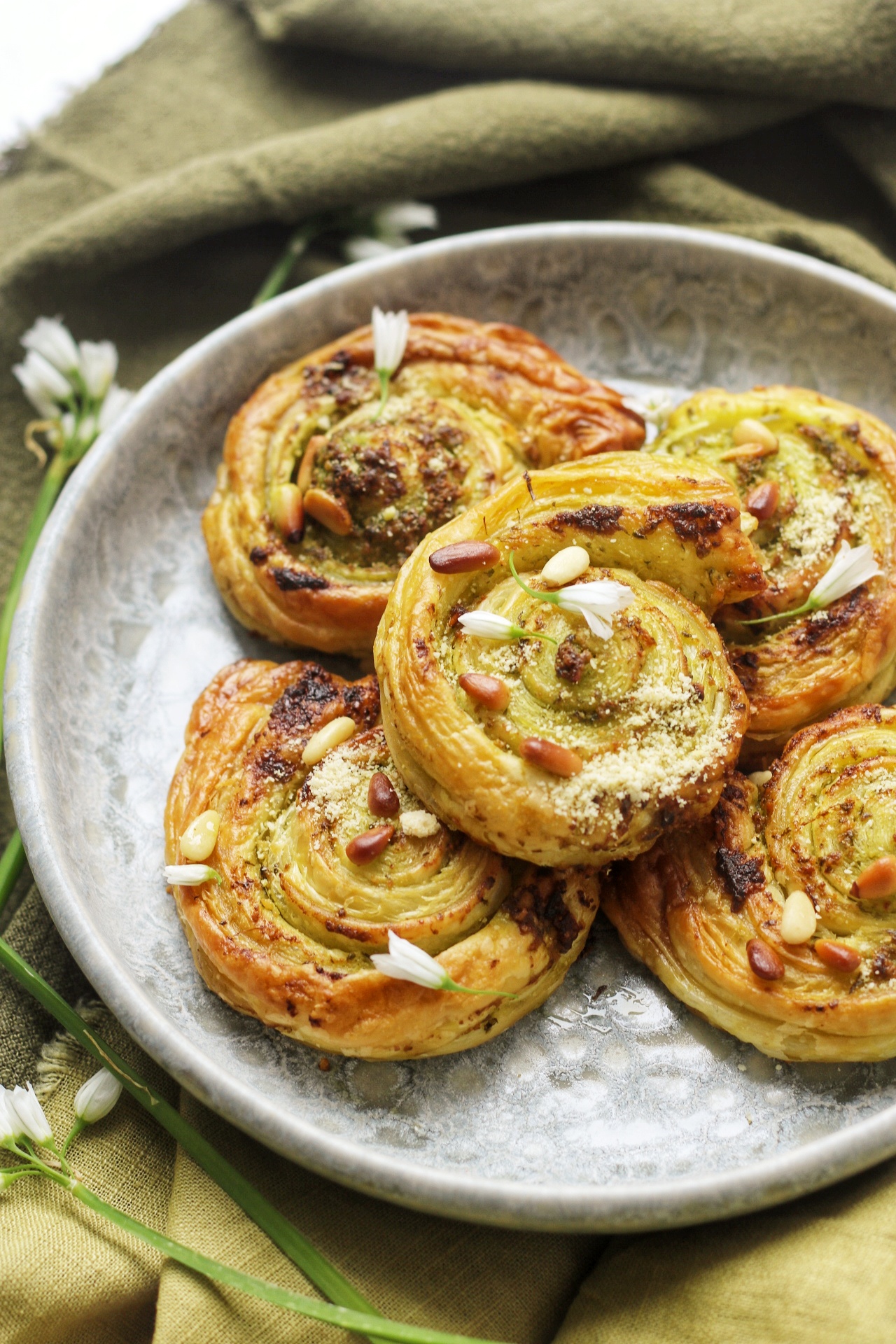
My book recommendations and other resources
Before you start snacking on every plant you see, make sure you've done your research. The following books are all great resources to have to hand. I know it's tempting to rely on our phones and foraging apps but a lot of these books (especially the pocket guides) are handy to have when you're out on a walk.
- Wild Food UK: Foraging Pocket Guide (perfect for taking on walks)
- Collins: Food for Free (great for slipping into bags or pockets)
- Wild Food: A Complete Guide for Foragers (includes some fantastic recipes!)
- Collins Gem: Mushrooms (a good introduction to mushrooms)
The best website hands down is Wild Food UK (which is also why I also love their pocket guide).
More foraged food recipes
What's your favourite food to forage?

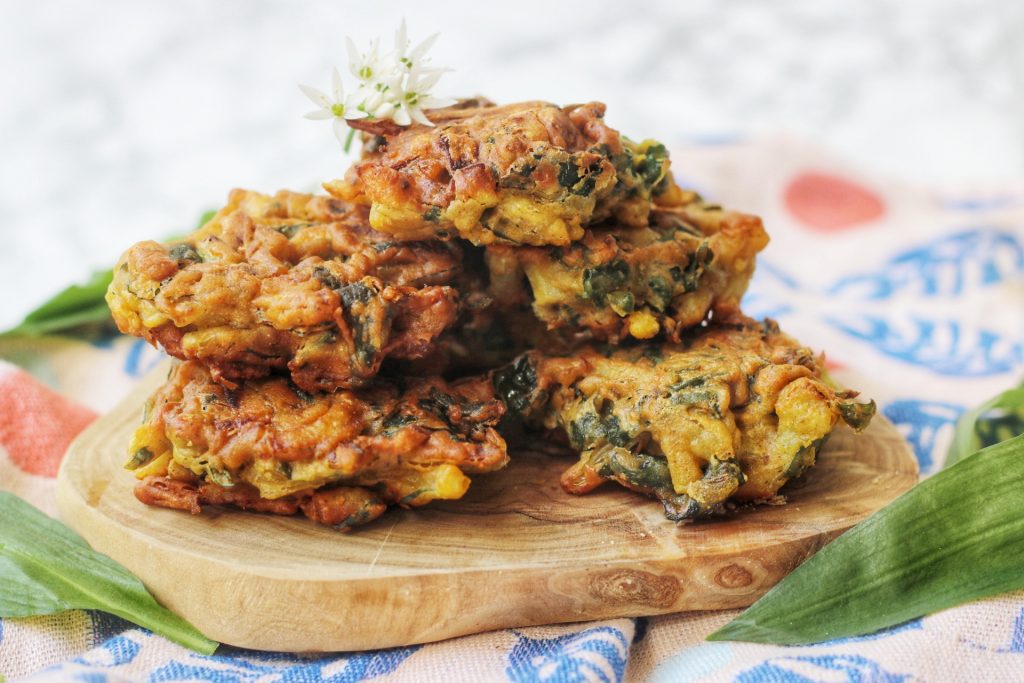
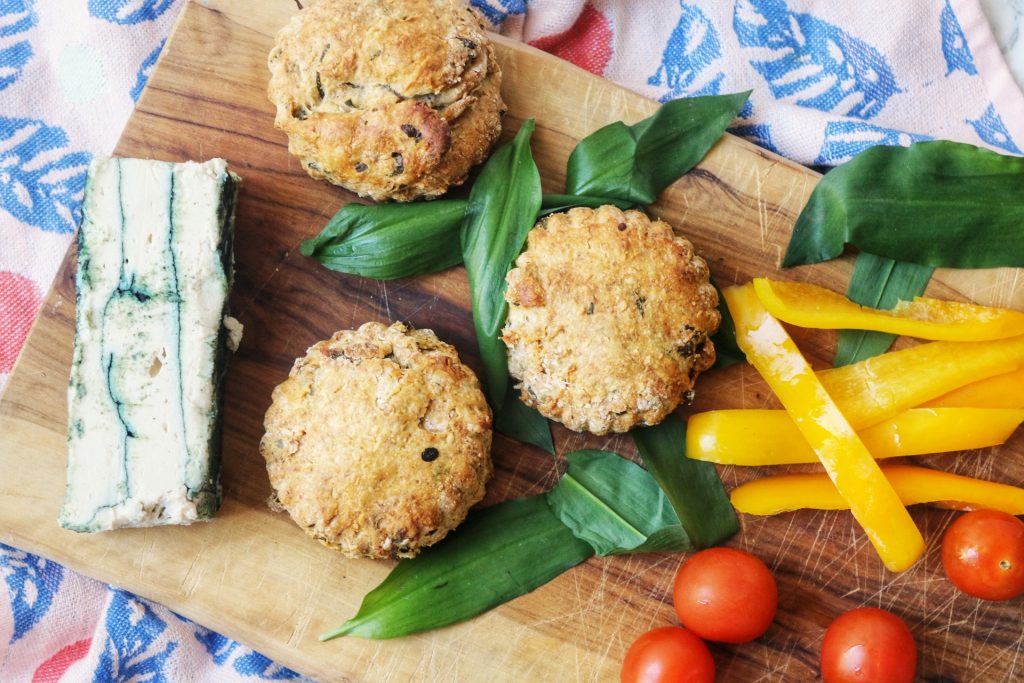

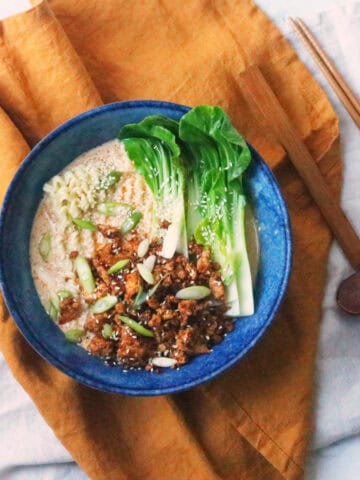
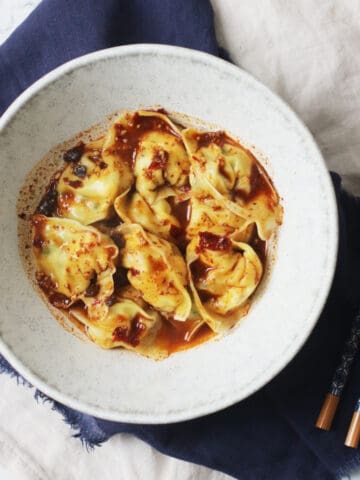

Leave a Reply